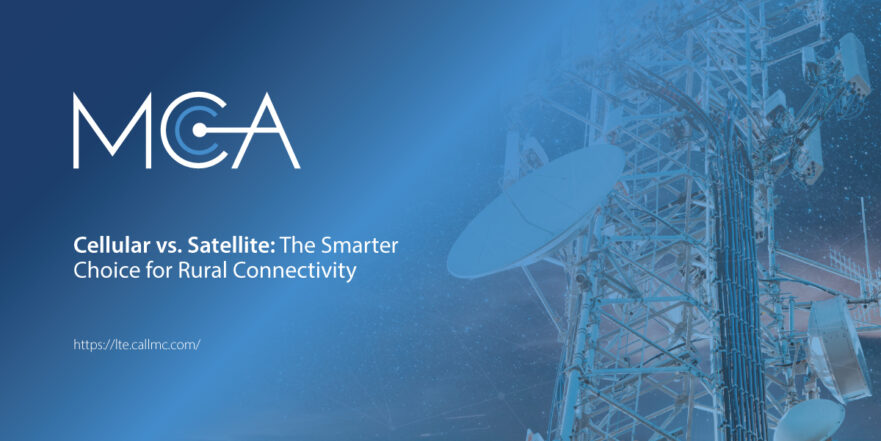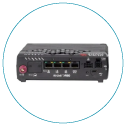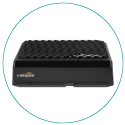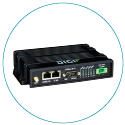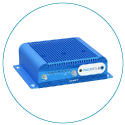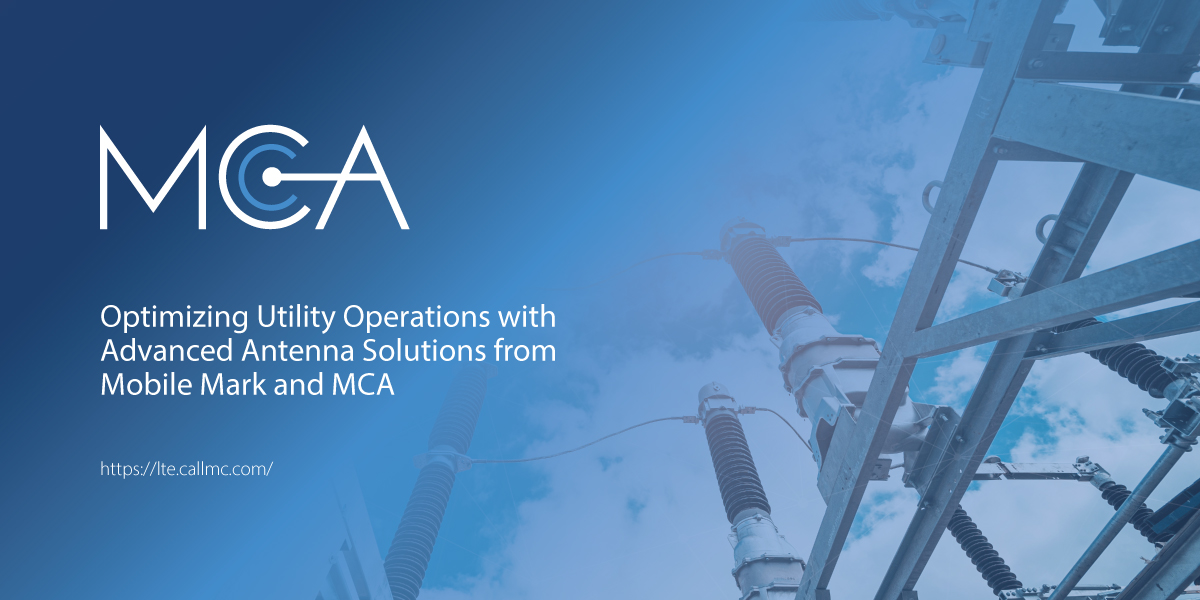Satellite vs. Cellular: How Do They Work?
Reliable internet connectivity is no longer a luxury but a necessity, especially for rural businesses that rely on internet access for critical operations. From enabling remote work to supporting IoT devices, rural connectivity has transformed into an essential utility. Two primary technologies vie to bridge the rural digital divide: cellular internet and satellite internet. While both have their merits, cellular internet emerges as the clear winner regarding reliability, cost-effectiveness, and long-term adaptability.
Here’s a comprehensive breakdown of why cellular internet is the smarter choice for businesses and individuals in rural areas.
Satellite Internet
Satellite internet relies on orbiting satellites to transmit and receive data. Ground stations send signals to satellites, which relay them to the satellite dish installed on the user’s property. While satellite internet can provide global coverage, its performance is hindered by high latency, lower speeds, and vulnerability to environmental factors.
Satellite services often offer maximum download speeds between 12-220 Mbps and upload speeds around 3-20 Mbps. Latency, the time it takes for data to travel between the satellite and the user, can reach up to 600 milliseconds. This level of latency severely impacts activities such as video calls, online gaming, and real-time IoT operations.
Cellular Internet
On the other hand, cellular internet uses cell towers to provide high-speed connectivity. It leverages 4G LTE and 5G networks, offering faster speeds, lower latency, and superior reliability. Current 5G networks can deliver download speeds of up to 1000 Mbps and upload speeds ranging from 10 Mbps to 75 Mbps.
Unlike satellite, cellular internet supports bandwidth-intensive activities such as remote work, e-learning, streaming, and Industrial IoT (IIoT) applications. Its scalability and adaptability to evolving technologies make it a future-proof solution.
Why Cellular Internet Outshines Satellite
1. Weather Resilience
Satellite internet is highly susceptible to disruptions caused by weather conditions. Heavy rain, snow, or dense cloud cover can interfere with signals, leading to downtime during critical moments.
Cellular internet, in contrast, is far more robust against inclement weather. Modern 5G networks feature advancements such as beamforming, strengthening signal reliability even in adverse conditions. This makes cellular internet a dependable choice for businesses that cannot afford interruptions.
2. Ease of Installation
Installing satellite internet requires precise positioning of large satellite dishes to ensure a clear line of sight to the satellite. This process is expensive, invasive, and time-consuming, often necessitating the use of professional technicians.
Cellular internet systems are more straightforward and quicker to set up. Compact antennas can be mounted on walls, rooftops, or even windows. Many user-friendly apps help users identify optimal placement for maximum signal strength. This plug-and-play convenience saves time and reduces installation costs, making cellular internet more accessible.
3. Cost-Effectiveness
The upfront costs of satellite Internet can be prohibitive. Satellite systems typically require specialized equipment, such as large dishes, mounting accessories, and professional installation fees. Maintenance costs can also be higher due to weather-related wear and tear.
Cellular internet offers a more affordable alternative. While initial investments in antennas and routers may be similar, cellular systems boast lower long-term costs due to excellent reliability, reduced maintenance needs, and easier upgrades. Cellular providers continually expand coverage and improve technology, delivering ongoing value without requiring significant infrastructure changes.
4. Superior Speed and Latency
Satellite internet’s high latency and limited bandwidth hinder real-time applications. Cellular internet, with its low latency (as low as 1 millisecond on 5G) and faster speeds, supports seamless video conferencing, cloud gaming, and IIoT operations.
The performance gap between satellite and cellular networks is a decisive factor for businesses that rely on high-speed internet for critical tasks. Cellular networks consistently deliver higher-quality connections with minimal lag, enabling productivity and efficiency.
5. Adaptability and Future-Proofing
Cellular technology evolves rapidly, with ongoing advancements in network speed, coverage, and reliability. Software updates and remote management tools ensure that users can stay up-to-date with minimal effort. Upgrading to newer technology typically involves simple firmware updates or hardware swaps.
In contrast, satellite systems often require expensive overhauls to adopt newer technology. Cellular internet’s adaptability makes it a future-ready solution that continues to meet evolving connectivity requirements.
Key Use Cases for Cellular Internet in Rural Areas
Remote Work and Education: Cellular internet supports remote work and e-learning with high-speed connections and low latency, ensuring seamless collaboration and resource access.
Industrial IoT (IIoT): Cellular networks enable real-time monitoring and control of IoT devices, supporting smart agriculture, manufacturing, and logistics in rural environments.
Backup Connectivity: Cellular internet is a reliable backup for businesses with fiber or broadband connections during outages, ensuring business continuity.
Temporary Worksites: Cellular internet provides portable, high-speed connectivity for construction sites, events, or other temporary setups.
The MCA Advantage: More Than Just Connectivity
At MCA, we deliver Cellular Networking Solutions (CNS) that go beyond simple connectivity. We specialize in end-to-end solutions that include design, deployment, and ongoing support to ensure your network operates at peak performance.
Precision Antenna Placement
Our on-site surveying services guarantee optimal placement and orientation of high-power antennas to maximize connectivity. We ensure reliable Internet access in even the most challenging environments by accounting for terrain, building interference, and cell tower locations.
Integrated Solutions
MCA offers a full suite of complementary technologies, including:
Two-Way Radios: Seamlessly integrated communication systems for enhanced operational efficiency.
Security Solutions: Intelligent video surveillance and access control systems for complete site protection.
Mass Notification Systems: Emergency alerting systems that integrate with cellular networks for real-time notifications.
Local Expertise, National Reach
With over 90 locations across the United States, MCA combines local support with national resources. Our experts work closely with clients to deliver tailored solutions that address their unique challenges.
When comparing satellite and cellular internet, cellular is the superior choice for rural connectivity. Its resilience, cost-effectiveness, and adaptability make it the ideal solution for businesses and individuals seeking reliable, high-performance internet access.
MCA takes cellular internet to the next level by offering comprehensive solutions that integrate seamlessly with Voice and Security systems. By choosing MCA as your technology partner, you gain a trusted advisor who delivers connectivity and so much more.
Ready to transform your connectivity experience? Contact MCA today to explore how our solutions can empower your business in any environment.
About MCA and Our CNS Team
MCA is one of the largest and most trusted integrators in the United States, offering world-class voice, data, and security solutions that enhance the quality, safety, and productivity of customers, operations, and lives. More than 65,000 customers trust MCA to provide carefully researched solutions for a safe, secure, and more efficient workplace.
Our Cellular Networking Solutions (CNS) team (formerly known as USAT) is made up of certified experts in designing and deploying fixed and mobile wireless data connectivity solutions for public and private enterprises nationwide - complete with implementation, training, proof of concept (POC), system auditing, and on-site RF surveying services with optional engineering maintenance contracts.
Our extensive catalog of world-class routers, gateways, and software designed for remote monitoring and management in even the harshest environments allows us to deliver a full suite of reliable technologies capped with a service-first approach.
Share this Post

